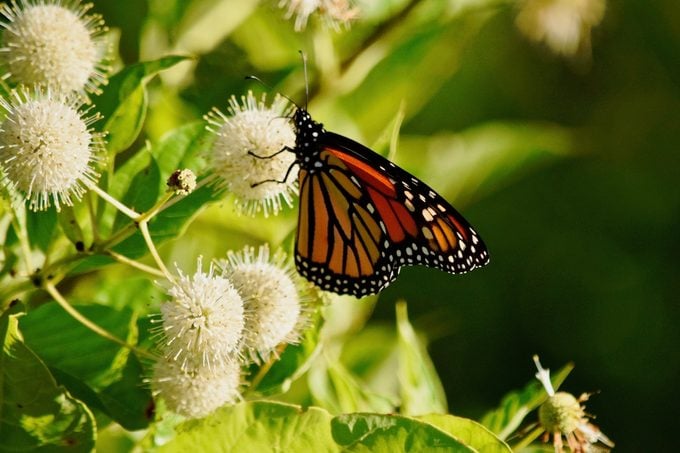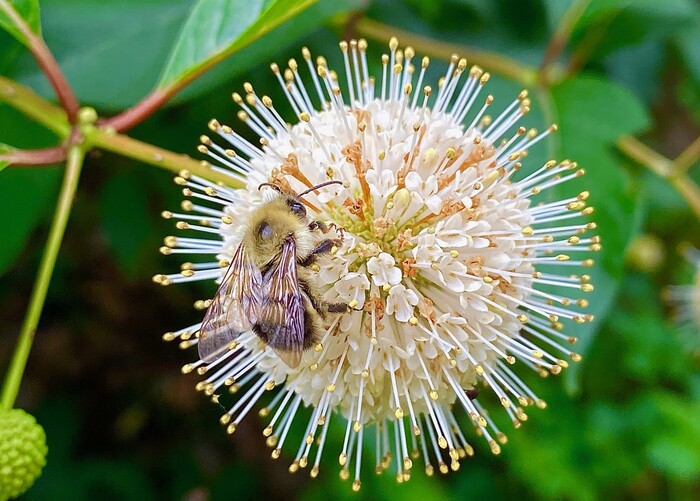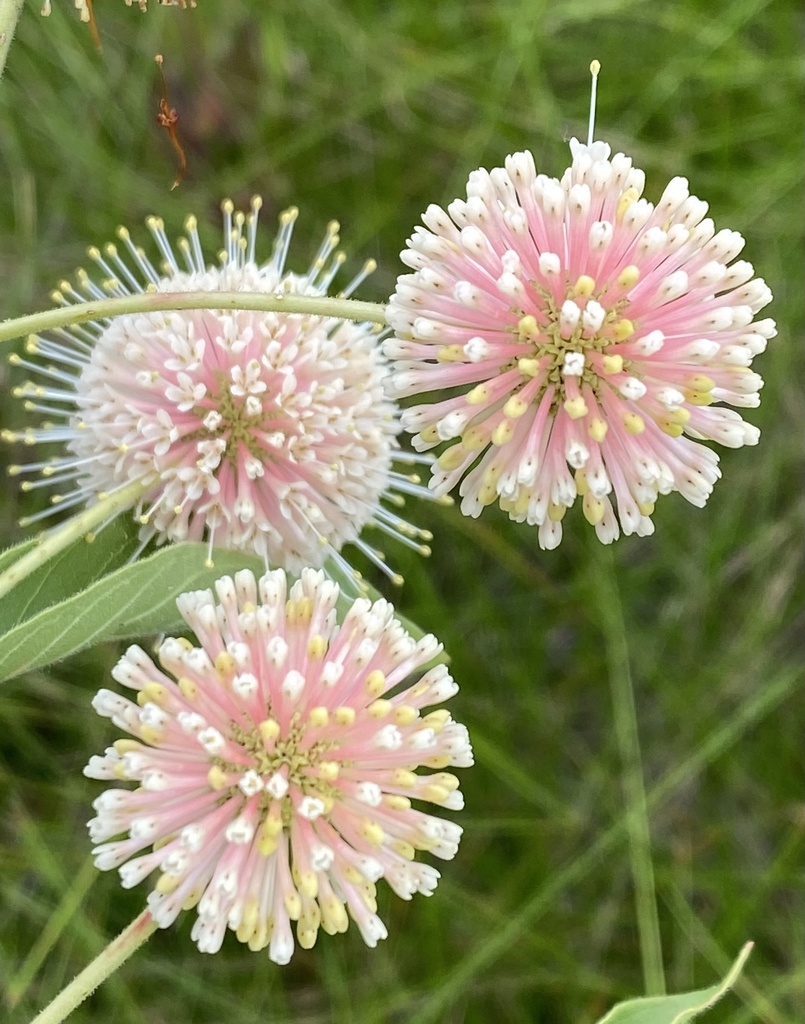Cephalanthus occidentalis, commonly known as the water button plant, is a remarkable species in the Rubiaceae family, native to the eastern and central parts of North America. This deciduous shrub or small tree is admired not only for its striking spherical flower clusters but also for its diverse ecological and horticultural benefits. In this comprehensive guide, we will explore the plant's physical characteristics, its habitat, ecological significance, uses, and how to cultivate it in both native and ornamental landscapes.

Cephalanthus occidentalis typically grows as a deciduous shrub or small tree, with an average height ranging from 1 to 3 meters (3.3 to 9.8 feet), although it can reach up to 6 meters (20 feet) under optimal conditions. The leaves are opposite or in whorls of three, elliptical to ovate, measuring 7-18 cm (2.8-7.1 inches) in length and 4-10 cm (1.6-3.9 inches) in width. The edges of the leaves are smooth, and the petiole is short.
The most distinctive feature of Cephalanthus occidentalis is its unique flower structure. The plant's flowers are organized into dense, spherical clusters that measure 2-3.5 cm (0.79-1.38 inches) in diameter. Each flower within the cluster features a fused white to pale yellow corolla, forming a slender tube that connects to the sepals. The plant's pistil extends slightly from the flower's crown, giving the flowerhead a striking appearance.
The fruit is a cluster of small, round achene-like seeds that mature into hard, glossy brown fruiting heads. These fruit clusters can persist throughout the winter, providing an aesthetic appeal even in the colder months.
Cephalanthus occidentalis thrives in wetland habitats, including marshes, floodplains, swamps, riparian zones, and humid forest understories. The species is widely distributed across the eastern and central parts of North America, from the east coast of Canada down to Florida, and westward to parts of Texas and the Midwest. Notably, there are two recognized varieties:
Cephalanthus occidentalis var. occidentalis (Eastern North American water button) is found primarily in the eastern regions, from New Brunswick and Nova Scotia to Florida and eastern Texas.
Cephalanthus occidentalis var. californicus (California water button) is found in the southwestern United States, including parts of California, Arizona, and extending into Mexico.
In its native habitat, Cephalanthus occidentalis grows in a variety of wetland conditions, often as part of the broader wetland plant community. It is also a member of the larger "Gulf Coast Marsh Plant" community, thriving along freshwater riverbanks and coastal tidal zones.
The ecological role of Cephalanthus occidentalis in wetland ecosystems cannot be overstated. This plant provides vital habitat and food for a range of wildlife, making it an essential component of native ecosystems.
Wildlife Habitat: The dense flower clusters attract a variety of pollinators, particularly bees and butterflies. The plant's nectar is a valuable resource for honeybees, who use it to produce honey, while hummingbirds and other pollinators also rely on the plant's abundant flowers.
Food Source for Birds and Mammals: The seeds of Cephalanthus occidentalis are an important food source for various bird species, including ducks and wood ducks. Deer, however, may graze on its leaves, though the plant can be toxic to livestock, which makes it unsuitable for pastures.
Soil Stabilization: The plant's robust root system is particularly effective in preventing soil erosion. Its extensive network of roots helps to stabilize wetland soil, especially in areas prone to flooding and water flow. This makes it invaluable in wetland restoration projects, where it helps reduce erosion and promote soil health.
Insect Habitat: The plant serves as a host for several insect species, including the larvae of the Hydrangea sphinx moth and other native insects. These insects play a critical role in the local food chain.

While Cephalanthus occidentalis is primarily valued for its ecological benefits, it also has practical uses in both medicinal and ornamental contexts.
Ornamental Uses: The striking appearance of the spherical flower clusters makes Cephalanthus occidentalis a popular ornamental plant in native gardens and wetland landscapes. It is commonly planted in rain gardens, butterfly gardens, and water gardens where it can thrive in wet soils. Its aesthetic appeal, coupled with its ecological benefits, makes it a favorite for both naturalistic landscaping and ornamental garden designs.
Honey Production: The nectar produced by the flowers of Cephalanthus occidentalis is highly sought after by beekeepers. This makes it an excellent addition to honeybee gardens, contributing to honey production during the summer months.
Wetland Restoration and Soil Erosion Control: Because of its ability to stabilize soil and thrive in wetland environments, Cephalanthus occidentalis is frequently used in restoration projects. Its root systems help combat erosion, making it a preferred species for marshland reclamation and floodplain rehabilitation.
Medicinal Applications: Traditionally, Cephalanthus occidentalis has been used in folk medicine, though caution is advised as the plant contains compounds that can be toxic in large quantities. Historically, parts of the plant were used to treat ailments such as fever and digestive problems.

Cephalanthus occidentalis is relatively easy to cultivate, especially in wetland and waterlogged soils. Here are a few key tips for successful cultivation:
Soil Requirements: This plant thrives in moist, well-drained soils. It prefers slightly acidic to neutral soil conditions but can adapt to a variety of wetland environments.
Sunlight: Cephalanthus occidentalis requires full sun for optimal growth, though it can tolerate partial shade.
Watering: As a wetland species, it requires consistent moisture. Planting along the edges of ponds, streams, or in rain gardens will provide the necessary water conditions.
Maintenance: Cephalanthus occidentalis is low-maintenance once established. It may benefit from occasional pruning to maintain its shape and remove any dead or damaged growth.
Propagation: Propagation is most commonly done via seed or root division. Seeds require stratification (cold treatment) for successful germination, and root divisions should be taken from healthy, established plants.
Cephalanthus occidentalis, or the water button plant, is a stunning and ecologically valuable species that serves a critical role in wetland ecosystems. Its attractive flowers, ability to stabilize soil, and importance as a food source for wildlife make it a highly valuable plant for conservation, horticulture, and landscaping. Whether used in wetland restoration, as an ornamental plant, or as a honey source, Cephalanthus occidentalis offers a variety of benefits that contribute to biodiversity and ecosystem health. With its ability to thrive in moist environments and its relatively low-maintenance nature, it is an excellent choice for gardeners and environmentalists looking to enhance their landscapes with a functional and beautiful native plant.
References
"Cephalanthus occidentalis," USDA Plants Database. Retrieved from https://plants.usda.gov/
"Water Button (Cephalanthus occidentalis): Ecology and Uses," American Wetlands. Retrieved from https://www.americanwetlands.org/
Brown, M., et al. (2019). Ecological Benefits of Wetland Plants in North America. Wetland Ecology Journal, 34(4), 240-256.
animal tags: Rubiaceae
We created this article in conjunction with AI technology, then made sure it was fact-checked and edited by a Animals Top editor.